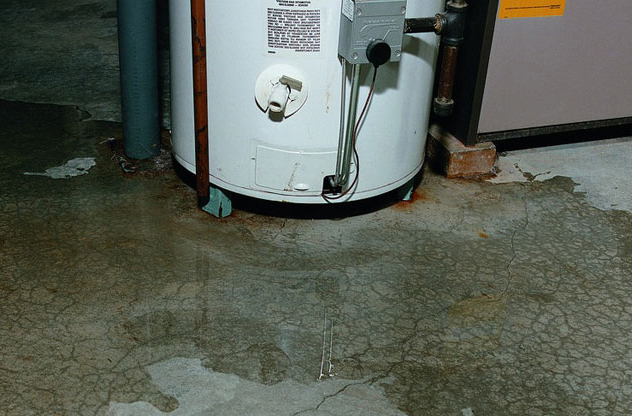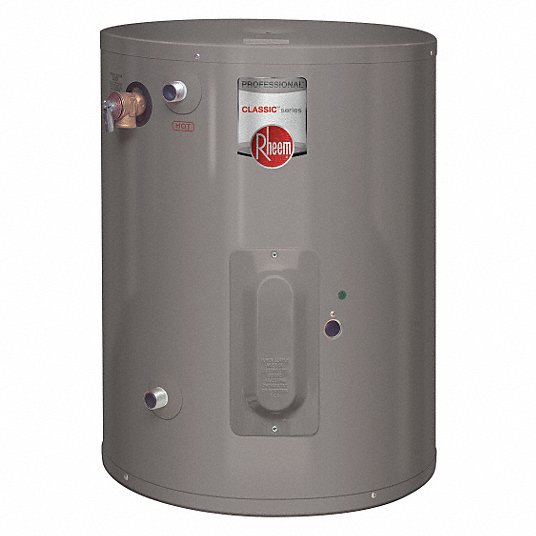Important Steps Homeowners Should Take While Dealing with Malfunctioning Heating Units
Important Steps Homeowners Should Take While Dealing with Malfunctioning Heating Units
Blog Article
Are you currently on the lookout for related information concerning Water Heater Burst?

Whether it is located in the cellar or a separate room, busted water heaters can create anxiety. A conventional unit holds 80 gallons, so an overnight leakage will bring about a flood. This leads to significant property damage with drenched wall surfaces as well as floorings. Besides, having no warm water supply is likewise bothersome. If you are handling these problems, remember of the following:
Call the Plumber
After doing the initial two safety and security steps, you need to call your plumber to come right away to fix a burst water heating system. There are usually indicators that your aging water heating unit has sediment accumulation in the interior.
Do not wait on significant flooding to call the plumber. Already, you will certainly need to invest even more to restore your residential or commercial property. Instead, as quickly as you detect these indicators, have a professional involved evaluate your water heater container. Usually, water heaters have a life-span of regarding 8 to 12 years. With regular evaluation as well as maintenance, you can extend its life.
Cut Off the Cold Water Supply
Cut off the tanks faucet water supply from the source. This goes from your main water line right into the storage tank. When your tank remains in good condition, the cold water quits filling up when the container is complete. But because it is dripping, the water will continue to stream. Shut the valve found at the top of the heating unit. Revolve this clockwise to close it off. You must transform off that primary water supply line outside your residential property if you can not find it or reach it.
Shut Down Source Of Power
Before calling the plumber, closed off a gas water heating system by transforming the temperature level dial. This will avoid electrocution, especially if there is a leak as water is a conductor. Usually, the heating element closes off when the water strikes a particular temperature level.
Tidy up Residential or commercial property
After calling the plumber, record damages by taking notes and images so you can claim your homeowner's insurance. Get rid of any kind of standing water to protect against mold and mildew development. If you have a submersible water pump, utilize that to drain the water.
Keep in mind, if you discover any kind of problems with your hot water heater, call the pros today. You can not take this issue lightly since a defective thermostat can elevate water temp to a dangerously high level, causing unintended burns. A damaged heater pressure relief valve can also cause an explosion. For best results, obtain a yearly check so your device obtains checked, cleaned up, drained, as well as filled up, assuring optimal efficiency.
After doing the initial two safety and security steps, you have to call your plumber to come right away to take care of a ruptured water heating unit. Rather, as soon as you identify these signs, have a specialist come to evaluate your water heating unit container. Before calling the plumber, closed off a gas water heating unit by turning the temperature dial. If you have a submersible water pump, make use of that to drain the water. Keep in mind, if you notice any kind of issues with your water heating system, call the pros right away.
8 REASONS YOUR HOT WATER HEATER IS NOT WORKING & HOW TO FIX
Water Heater Problems & Solutions
Loose or Damaged In-Line Valve
Unlike a water leak near the bottom of your water tank, a water leak on top of your system can be easily fixed. A common cause of water tank leaks includes a loose in-line valve. This is a handle that is located at the top of the water tank that is engineered to activate or deactivate the flow of water. To fix this problem, you will need to secure the nut that holds the ball or in-line valve in its location. If the leak becomes more severe once it is tightened, you will be required to travel to your local hardware store to purchase a new in-line valve for your water heater.
Damaged Pressure Relief Valve
Most types of water heaters are equipped with a pressure relief valve that is engineered to discharge pressure from the water tank when it becomes too high. If this valve on top of your water heater begins to leak, we recommend purchasing a new one online or from your local store. The process of removing and replacing pressure relief valves is not complicated.
No Warm Water
If you have an electric water heater in your home, the most typical cause of a lack of warm water is a broken heating element. Your water heater is equipped with two heating elements that are tasked with heating incoming water in the water tank. Once a heating element begins to malfunction, you will have little to no hot water to use for showering, cleaning, and laundry.
Low Supply of Hot Water
Are you continuously running out of warm water? This issue may be a byproduct of a cracked dip tube. This tube is engineered to push cold water to the base of your water tank to be heated. Once a crack or hole begins to form in the dip tube, the incoming supply of cold water may be released near the top or middle of your tank. As a result, the cold water on top of the tank will be sent to the faucets and showers in your house. This hot water heater problem can only be fixed by replacing the dip tube on your system. Since the process of installing a new dip tube is complex, we recommend calling a certified technician for help.
A low supply of warm water may also be a signal of excess sediment buildup in your water tank. As your water heater reaches the middle of its life cycle, minerals in water including magnesium and calcium will begin to collect at the base of the water tank. As the minerals continue to grow, there will be less room in the water tank to store hot water. To resolve this problem, flush your water heater to remove the excess minerals.
Water is Too Warm or Cold
If the water in your shower feels uncomfortable hot or cold, you can adjust the temperature of your water by changing the settings on your thermostat. Setting the temperature to 120 degrees Fahrenheit may help you save money on your utility bills. This is an excellent temperature to use if you’re worried about scalding or skin irritation. Does this temperature feel too cold? You may also adjust the thermostat to 140 degrees Fahrenheit to make your showers more pleasant. If your hot water heater is not working when you change the temperature, this is an indicator of a broken thermostat. Immediately find a certified plumbing or heating contractor in your area to repair or replace your thermostat.
Low Water Pressure
Low water pressure is not always caused by a malfunctioning water heater. If you live in an older home with smaller water pipes, the flow of water will be restricted prior to reaching our kitchen or bathroom skins. The only way to eliminate this hot water heater problem is to connect new ¾-inch water lines to your system. Another type of problem that may negatively impact your water pressure includes calcium deposits in water pipes.
As magnesium and calcium begin to form in your pipes, the diameter of your water lines will become smaller. As a result, the warm water from your water heater will not be able to travel in an efficient manner to your sinks or appliances. Since the process of replacing water pipes includes removing drywall, an average homeowner that does not have a plumbing license will not be able to fix this hot water heater problem.
https://www.wmhendersoninc.com/blog/8-reasons-your-water-heater-is-not-working-how-to-fix/

As a person who reads about Water Heater Burst, I figured sharing that editorial was sensible. Make sure you take the opportunity to promote this content if you enjoyed reading it. Kudos for your time. Come back soon.
Professional touch? Contact. Report this page